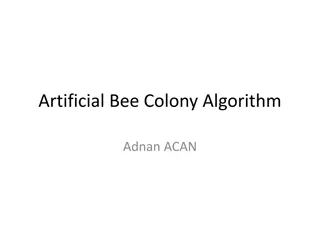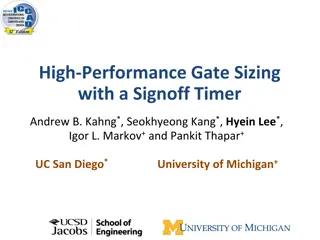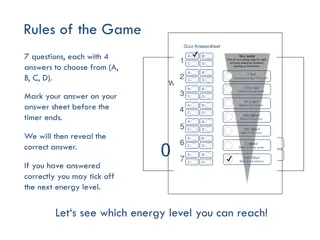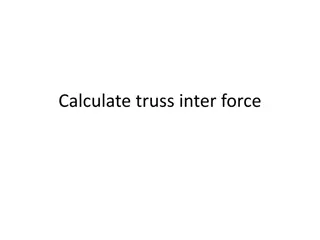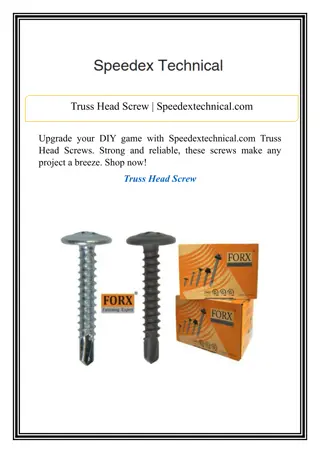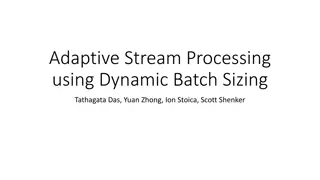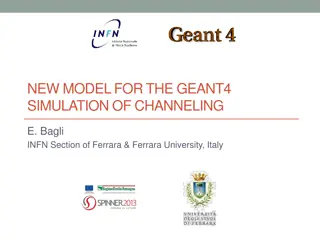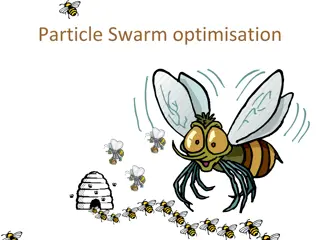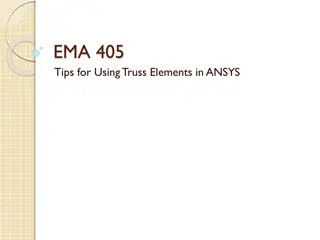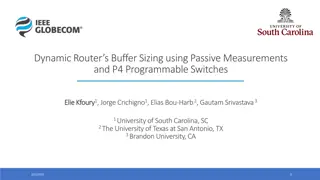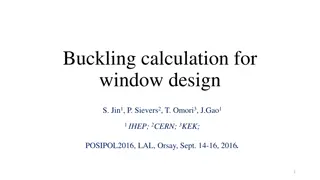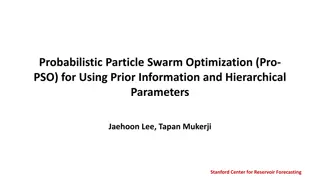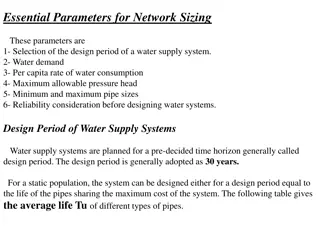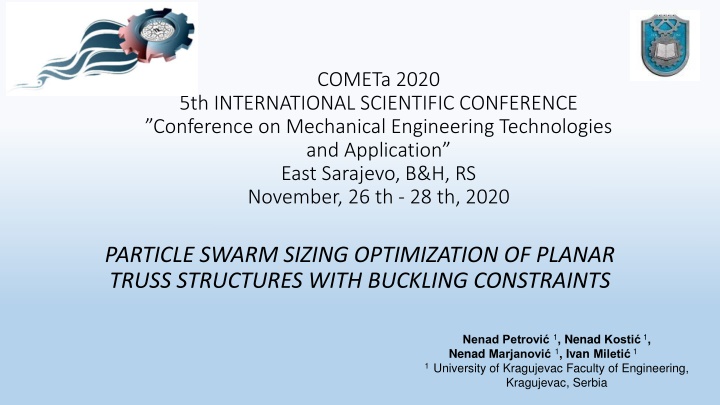
Particle Swarm Sizing of Truss Structures with Buckling Constraints
This paper discusses the use of particle swarm optimization for planar truss sizing with dynamic buckling constraints to minimize mass and reduce total surface area. It delves into truss structural optimization, buckling constraints, and the application of Particle Swarm Optimization in structural engineering. Examples like the 10-Bar Truss Problem and materials such as Aluminum 6063-T5 and Steel are presented.
Download Presentation

Please find below an Image/Link to download the presentation.
The content on the website is provided AS IS for your information and personal use only. It may not be sold, licensed, or shared on other websites without obtaining consent from the author. If you encounter any issues during the download, it is possible that the publisher has removed the file from their server.
You are allowed to download the files provided on this website for personal or commercial use, subject to the condition that they are used lawfully. All files are the property of their respective owners.
The content on the website is provided AS IS for your information and personal use only. It may not be sold, licensed, or shared on other websites without obtaining consent from the author.
E N D
Presentation Transcript
COMETa 2020 5th INTERNATIONAL SCIENTIFIC CONFERENCE Conference on Mechanical Engineering Technologies and Application East Sarajevo, B&H, RS November, 26 th - 28 th, 2020 PARTICLE SWARM SIZING OPTIMIZATION OF PLANAR TRUSS STRUCTURES WITH BUCKLING CONSTRAINTS Nenad Petrovi 1, Nenad Kosti 1, Nenad Marjanovi 1, Ivan Mileti 1 1University of Kragujevac Faculty of Engineering, Kragujevac, Serbia
INTRODUCTION INTRODUCTION This paper will present the use of particle swarm optimization algorithm for planar truss sizing using discrete sizing variables and dynamic buckling constraints. An additional parameter which plays a significant part in overall construction costs is the total outer surface area which needs to have some form of coating. This research will compare optimal models total surfaces in order to get a better understanding of the influence mass minimization plays in decreasing the total area.
Truss structural optimization Truss structural optimization The minimum mass design problem i n = ( ) ( ) = = with , , minW A Al A A A 1 i i i n = 1 i subjected to: = = for for for 1, 1, 1, = , , A A A i i n n min i max min i max , u u u j k min j max P Ai k i
Buckling Buckling Constraints Constraints In order to achieve practically applicable results this paper uses dynamic Euler buckling constraints. Testing compressed bars is done using the following expressions: 2 E I l P Ai = F i i ki ki 2 ki P F F A = = P Ai for an d , Ai ki k i A = P for 1, ..., . F F i n i i Ai ki
Particle Swarm Optimization Particle Swarm Optimization Particle swarm optimization (PSO) is classified as a swarm intelligent- based algorithm, and it searches the entirety of the acceptable domain. Each new value is derived using the following formula: = + new i x old i x , , , new i ( ) ( ) = + + c r x x c r x x , , , , , , new i old i p p p i x i g g g i x i = max min Iteration max Iteration max Position is defined as xi, while the velocity is represented with i.
Software Software
Examples Examples The 10 Bar Truss Problem The 17 Bar Truss Problem Aluminum 6063-T5 Steel
Results Results Area of bar [cm2] 1 2 3 4 5 6 7 8 9 10 Mass [kg] Area [m2] GA LC1 [13] 78.540 15.904 415.475 240.528 1.131 15.904 122.718 415.47.6 103.869 181.458 PSO LC1 103.869 1.131 380.133 283.529 1.131 1.131 50.265 425.389 95.033 4.909 GA LC2 [16] 103.869 12.566 415.476 254.469 3.142 33.183 122.718 314.159 63.617 113.097 PSO LC2 95.033 9.621 415.475 283.528 1.131 28.274 95.033 346.361 70.882 1.131 10 bar truss 4795.734 4028.775 4195.899 3869.938 42.706 34.600 40.407 35.646
Results Results Area of bar [cm2] 1 2 3 4 5 6 7 8 9 10 11 12 13 14 15 16 17 Mass [kg] Area [m2] GA [9] 44.179 23.758 86.590 23.758 56.745 32.758 86.590 0.283 38.485 38.485 56.745 38.486 38.486 44.179 50.265 56.745 50.265 1571.875 11.044 PSO 70.882 31.172 103.869 6.158 95.033 2.011 63.617 8.042 8.042 38.485 63.617 44.179 33.183 44.179 44.179 70.882 9.621 1536.741 10.649 17 bar truss All results are taken as the best of 10 repeated optimizations with the same initial parameters.
CONCLUSION CONCLUSION This research presents the benefits of using a more modern optimization method in order to achieve results closer to global optima values for truss structural optimization. Optimal models show a ~16% decrease in optimal mass solutions for the 10 bar truss problems first load-case, and a 7.8% decrease for the second load-case. The improvement on the 17 bar truss example is less at 2%, however this just shows that both solutions are close to the global optimum. When comparing the parameters of overall outer surface area the decreases in mass correlate to the decreases in area. Using PSO, the optimal models overall surface area compared to GA results 10 bar truss decrease of 19% (LC1)and 11.8% (LC2), 17 bar truss decrease of 3.5%.




